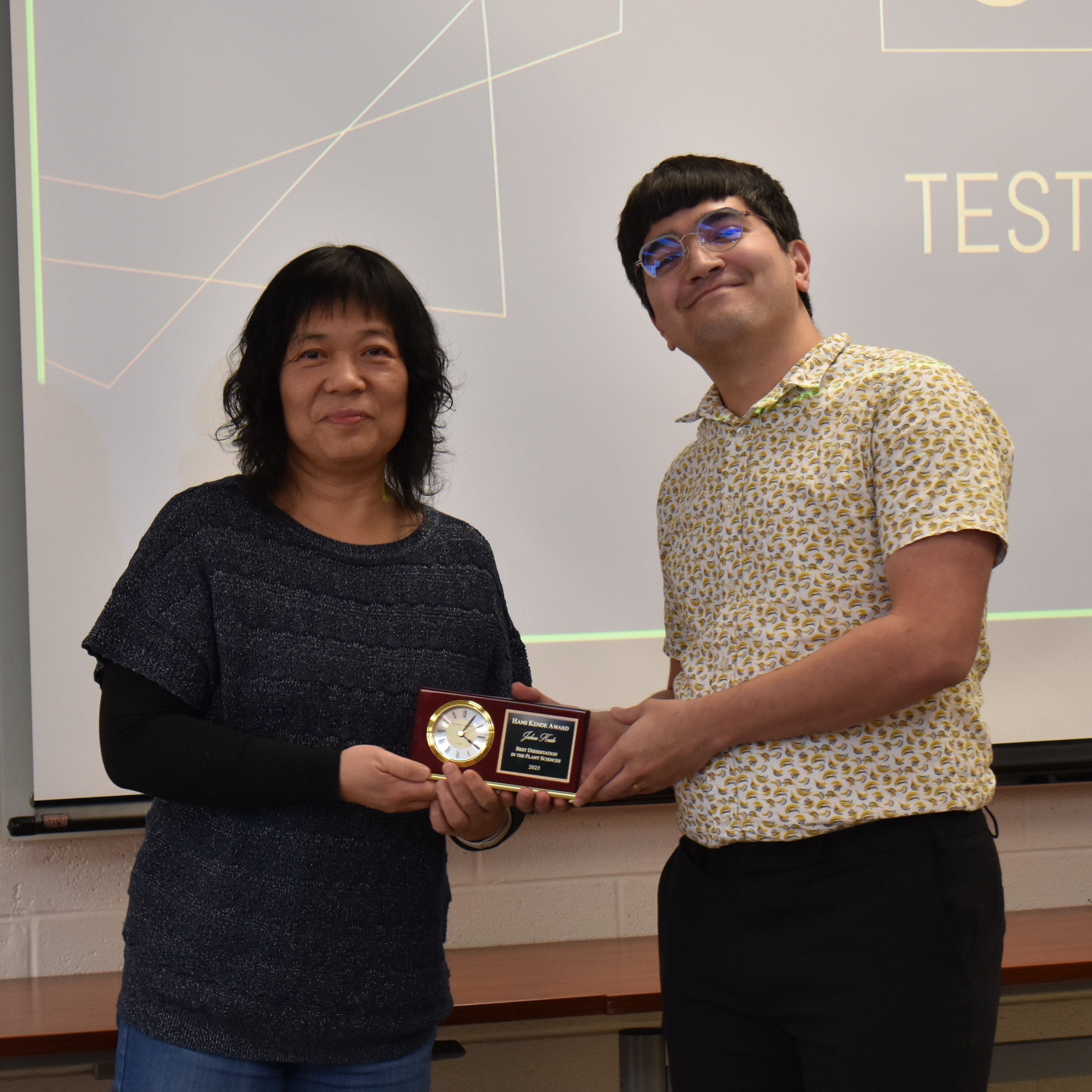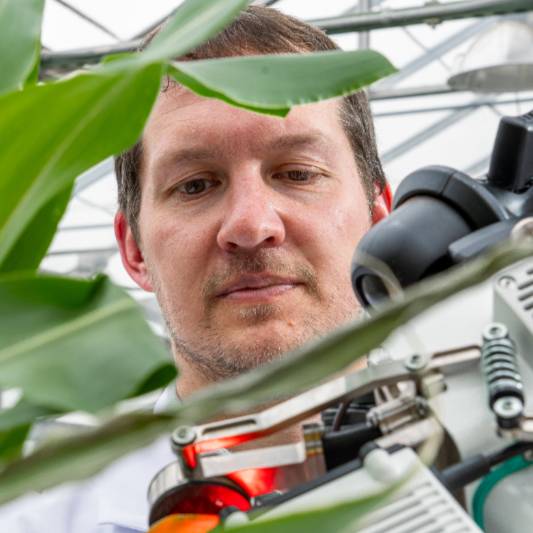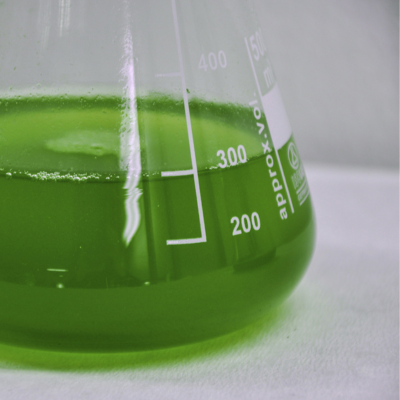Plant protein helps control both chloroplast's chemistry and lipid membrane
A new Michigan State University study shows how a protein, called peroxiredoxin Q (PRXQ), connects two biochemical pathways that are vital for plant chloroplast health.
Chloroplasts are the power houses of plants. They are the site of photosynthesis, the process that uses sunlight and carbon dioxide to produce the energy that powers life on Earth.
The protein PRXQ seems to bridge two systems that keep chloroplasts (and by extension, plants) healthy.
The first system relates to chloroplast redox states, or how chloroplasts keep a healthy balance of chemicals and energy. PRXQ’s role in this context is well known. It sits in the photosynthetic tissue of plants, where it protects the chloroplast from damage by the chemical, peroxide. (Think of the peroxide in 'hydrogen peroxide').
"Peroxides are potentially toxic byproducts of photosynthesis. We think PRXQ helps regulate these byproducts by transforming them into less toxic molecules," says Patrick Horn, a former postdoc in the lab of Christoph Benning at the MSU-DOE Plant Research Laboratory. Patrick is currently Assistant Professor at East Carolina University (ECU). “Limiting this damage is a constant battle in plants, especially under stress conditions.”
The new research shows PRXQ impacts a second system that produces chloroplast membranes. These membranes are made of lipids, small molecules found in fats, oils, and waxes. And one reason researchers study lipids is that they are great at storing energy. Scientists are targeting them to produce renewable sources for industrial (ex: biofuels) and nutritional (ex: healthy fat) applications.
How do lipids and redox states connect?
When scientists removed PRXQ from a plant, the amounts of one type of lipid (containing the fatty acid, 16:1t) dropped. Interestingly, this molecule is found in all plants, except for orchids, for reasons the lab would love to know.
The team saw that PRXQ affects a protein, called FAD4, which produces that same molecule.
"We designed various experiments to confirm the lipid and redox pathways are related," Patrick says. "We made genetic complementation tests, we mutated parts of the proteins. We also tested this relationship in a non-plant system."
Enter Montgomery Smith, an undergrad who supported Patrick’s work on the project.
"We placed both proteins in yeast," Montgomery says. "Since they are not naturally found in yeast, it would be powerful to show that they interact in a ‘foreign’ environment. We did see production of a similar unusual lipid, not normally present in yeast."
"We think FAD4 experienced some physical change that induced it to produce the lipid,” Patrick says. “Maybe, this happened only when PRXQ was in the vicinity and was interfering with the chloroplast’s chemical balance.”
“We're still not sure exactly yet HOW the relationship works. It is complicated to untangle these two biochemical pathways in a living plant.”
Careers built and science keeps moving
Montgomery joined Patrick’s’s project during her freshman year. She was thrown into the thick of things right away.
“I had to trust it would all make sense,” Montgomery says. “It helped to work with Patrick, who knew what he was doing. I got to experience the intellectual side as well as the ‘tricks’ scientists use to tackle complex scientific problems.”
"I spent a lot of time trying new methods, many of which didn't work out. However, that didn’t hold us back. It was exciting to follow the science wherever it took us, even if we didn’t know what we would find. That's a good lesson for aspiring scientists. Things don't always work perfectly."
"Some of the fun in science is to 'see what happens', despite the perceived failures - which are all learning experiences," Patrick agrees.
Now, Montgomery is a budding scientist with a solid and practical knowledge base. (Patrick credits her for always being up to a challenge and quick to the task).
Patrick’s career has also evolved, having recently started his first tenure-track position at ECU. The PRXQ work fits with his new lab’s research direction.
"We study how redox reactions and states are broadly involved in lipid metabolism," he says. "We now know a bit more about how lipids work within plant cells. But the more we investigate, the more new roles and traits we find associated with lipids."
The importance of mentorship is not lost on Dr. Christoph Benning, lead investigator for the study. He adds, “Mentoring future mentors is an important mission of the academic enterprise. Seeing it all come together, as it did in this case, was very gratifying.”
This work was primarily funded by the US Department of Energy, Office of Basic Energy Sciences. It is published in The Plant Journal.
By Igor Houwat, Patrick Horn, Montgomery Smith; Banner image by Victor DiRita, NatSci photographer



